My friends Marianne and Jean-Pierre offered me the use of their apartment in Les Gobelins in the 13th Arrondisment in Paris while they are away. So who was I to say non when they decided to go to Sicily for two weeks? French bread, strolling on the Seine and seeing old friends—and, more importantly, an opportunity to see the Paris Bike boom first hand was not to be passed up.
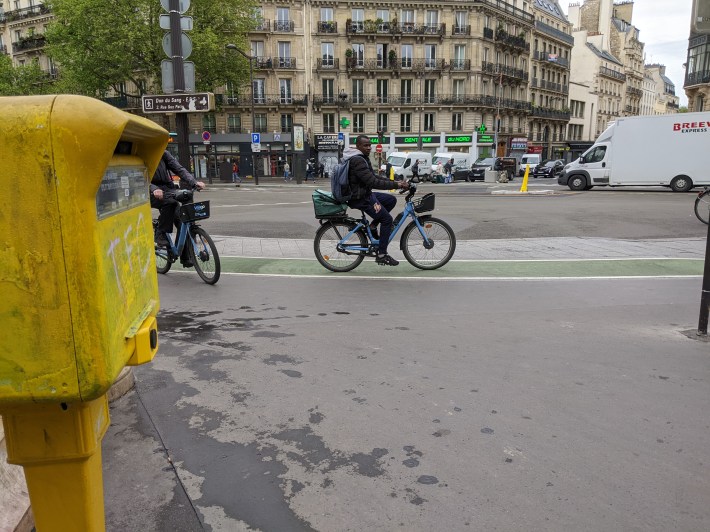
I believe people in the safe-and-livable-streets field have an obligation to travel to countries and cities with good bike infrastructure to experience it for themselves. This is especially true for planners, engineers, and other transportation leaders who otherwise end up “iterating” (which is another way to say “experimenting on humans” *see note) designs that have already failed in other countries while ignoring best practices.
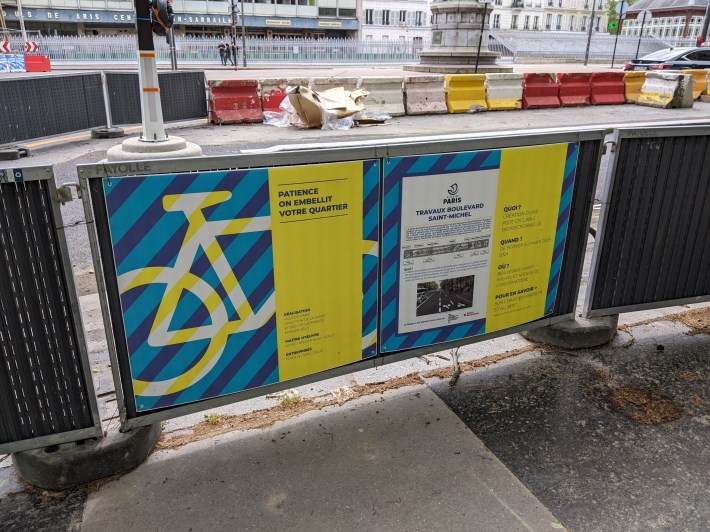
First, the Paris Bike boom is real. I’ve never seen such in-your-face, undeniable proof of a city committed to change - and to safety. They aren’t hand-wringing over the design of a single street here or there—no, Paris is in the process of transforming the entire city, everywhere, all at once.
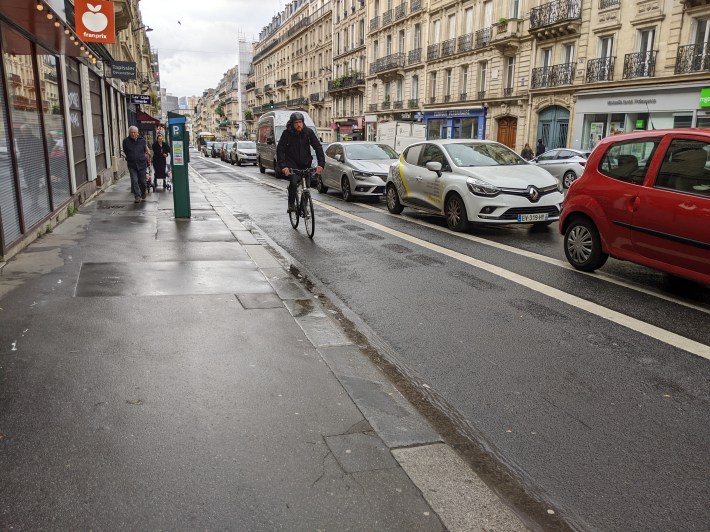
While in Paris, I had the pleasure of meeting with Stein-van Osteren, a Dutchman who works for UNESCO and is author of Why Not the Bike? who was kind enough to take me on a cycling tour of the Rue de Rivoli and other streets in Paris, newly widened to provide real safety for cycling. He also showed me the Parisian school streets, from which motorists are completely blocked (with steel gates and concrete, not plastic posts and wishful thinking).
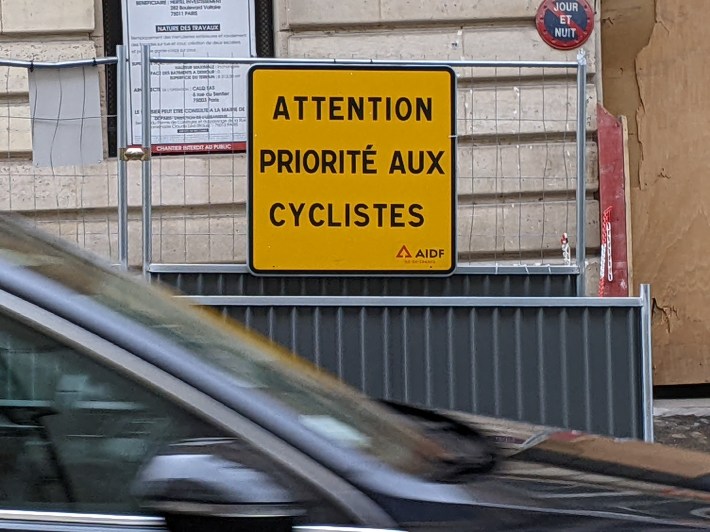
“The idea is to stop the dangerous snake” said Osteren. In his view, when cars are permitted to drive in the same space as cyclists, it’s as if there were a huge, dangerous snake on the street, threatening anyone not shielded by two-to-three tons of metal and glass. And he’s right—even when drivers are patient and keep their distance, there’s something completely unnerving about having a giant, deadly machine driving behind, controlled by an impatient motorist looking for any opportunity to pass. It’s the main factor that deters people from cycling.
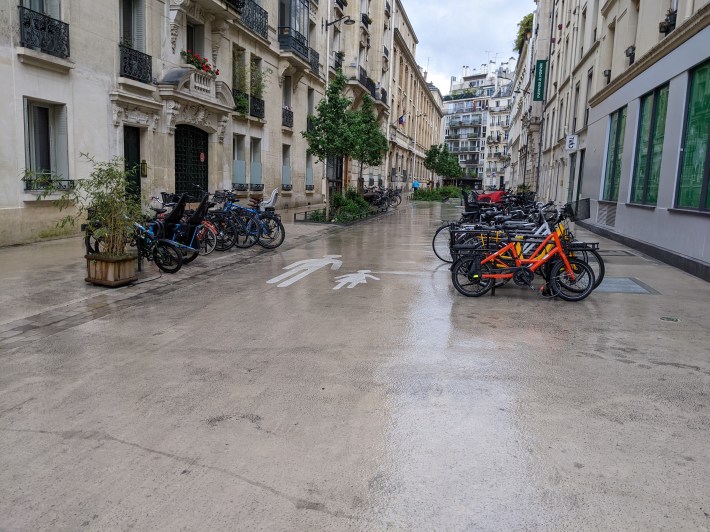
That's getting addressed everywhere in Paris.
I also met with Mauricio Suarez, with the Parisian office of the Danish consultancy Copenhagenize, who talked about how the French bike boom isn’t just limited to Paris. There are similar changes going on throughout the country, in the smaller cities (many of which aren’t small at all) such as Lyon and Nantes.
I didn’t actively take notes; I just listened. That’s what everyone from the Bay Area and most other places in the United States needs to do. Given the inarguable success of the Dutch and the Danish in building bike friendly, safe, livable streets, there’s really nothing to do but listen with humility. These folks have figured it out; we have not. For the most part, this is what the Parisians have done in coming up with their designs.
But when it comes to the Paris bike boom, in a way I didn’t need to meet with anyone. All I had to do was look around. Today in Paris, you can’t walk more than a minute in any direction without coming across active construction sites where bus boarding islands, protected bike lanes, and protected intersections are being installed—with concrete dividers, not plastic and paint. There are already newly protected bike lanes on major routes throughout the city.
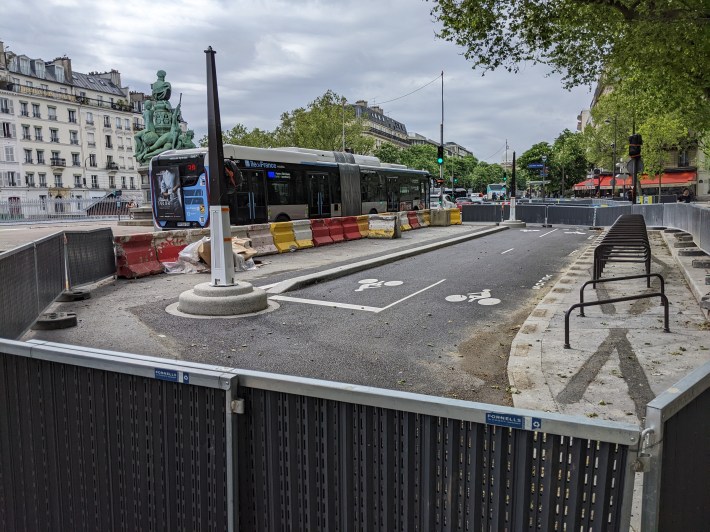
Yes, there are “brain farts,” as Copenhagenize’s Mikael Colville-Andersen calls them—lanes left over from a previous generation of car-based planners who put taxis, buses, and cyclists in the same lanes. Was the point back then to intentionally make cycling as terrifying as possible and to make sure buses go as slowly as possible?

But that’s what Osteren calls “bicycle archaeology”--artifacts that show what Paris used to be, not what it is and what it’s becoming. It’s getting fixed thanks to Mayor Anne Hidalgo’s promise to build a Paris that is 100 percent bikeable. The evidence is everywhere.
It stands in stark contrast to the Bay Area, where engineers continue to talk about bikes while they actually build for cars. Maybe they give cyclists a lick of paint or a plastic post here or there so they can tick the “bike lane” box on some grant application without actually doing anything real. You can tell the Bay Area’s leaders are, excuse the French, plein de merde when it comes to safety. One just has to look at the garbage getting installed on Valencia. And how many times has Streetsblog reported on SFMTA officials celebrating some crap bike lane “protected” only by plastic posts and paint?

In stark contrast, when they use plastic posts in Paris, they’re only there to give drivers a last warning that they’re about to slam into concrete. I saw many installations where the first post before a bike lane barrier is white and obviously plastic, a K-71. The second one is black, painted to match the steel bollards one finds all over Paris, which will do serious damage to a car. So drivers get an obvious warning, then a last chance to pay attention before they get a terrible shock. Behind the plastic is concrete, which will physically stop a motorist before they kill or maim a cyclist.
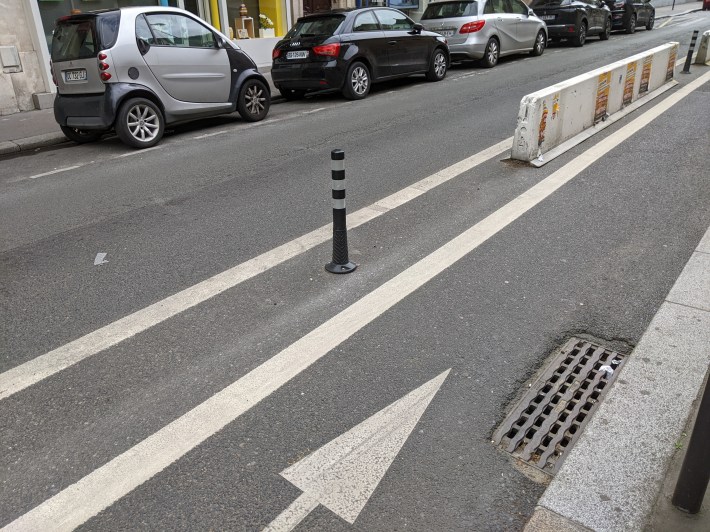
That’s, really, the only appropriate application for a plastic post. And yet, I’ve literally heard planners at SFMTA say they can’t use anything other than plastic because they might get sued by drivers. And I’ve heard leaders in Oakland say they need the bike lanes to be paint-only so they can double as a “breakdown lane.”
People who say such things and go along with such crap installations can talk about safety all they want, but that is not their goal. The proof is in what they put on the streets. Bay Area officials try to lie about the physics of what happens when an errant driver swerves into an occupied bike lane.
Plastic does not work. It is not protection. It is impossible.
I’m writing this as I ride a packed, 200-mile-per-hour high-speed train to Germany for the Velo-city conference in Leipzig. There, I'll learn more about what’s going on in other cities in Europe. But first: here are a few more pics from Paris.
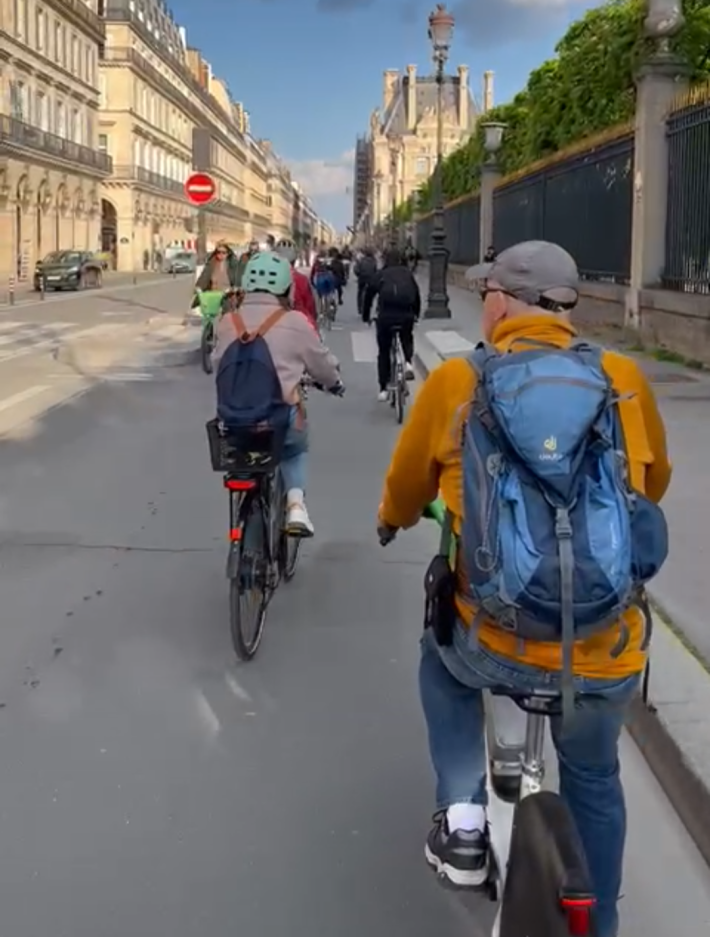

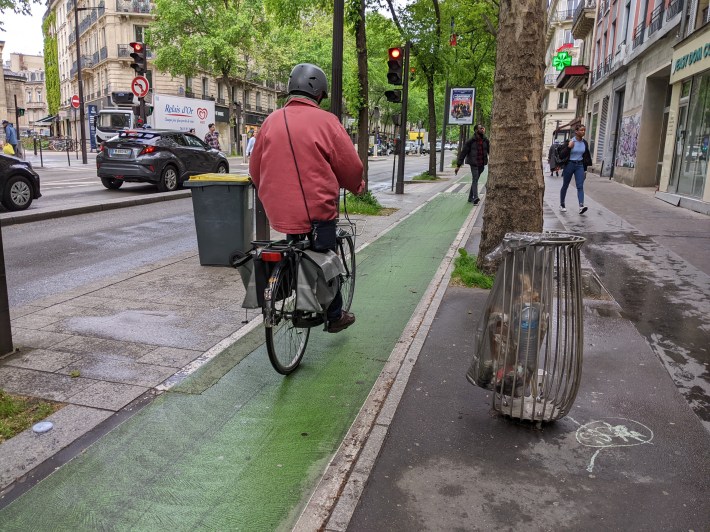
*Note: Unnecessarily experimenting on humans is considered a serious crime in most of the world - just not in the Bay Area.





